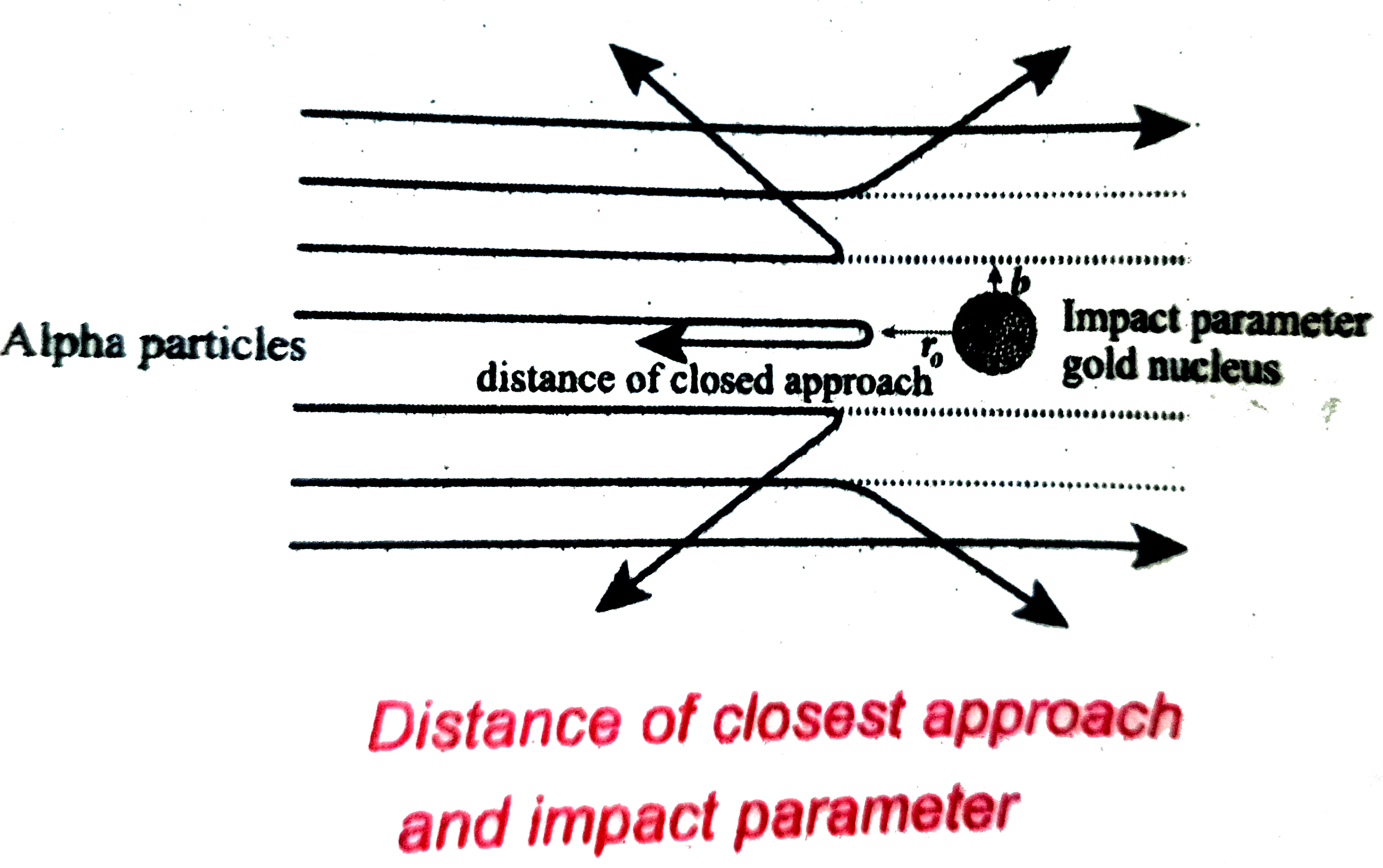Describe Rutherford’s experiment on the scattering of α−particle by a nucleus. Explain the observations and conclusions f the experiment.
Text Solution
Experiment arrangement: A schematic arrangement of the Geiger – Marsden Experiment is shown in figure.

A radioactive source of α−particles polonium is enclosed in thick lead block, provided with a narrow opening. The a-particles from this source are collimated into a narrow beam through a narrow slit. The beam is allowed to fall on a thin gold foil of thickness 2.1x10−7 m. The α−particles scattered in different directions are observed with the help of a rotatable detector which consists of a zinc sulphide screen and a microscope. Whenever an α−particles strikes the screen, it produces a tiny flash or scintillation, which is viewed through the microscope. In this way, the number of α−particles scattered at different angles can be counted. The whole apparatus is enclosed in an evacuated chamber to avoid scattering of α−particles by air molecules.

Observations: As shown in figure, a graph is drawn between the scattering angleθ and the number N (θ) of the α−particles scattered at angle angleθ, for a very large number of α−particles. The dotted points are the alpha scattering experiment data points obtained by Geiger and Marsden and the solid curve is the prediction from Rutherford.s nuclear model. It is observed that the Rutherford.s nuclear model is in good agreement with the experimental data.
The above graph reveals the following facts:
(i) Most of the alpha particles are undeflected through the gold foil and went straight.
(ii) Some of the alpha particles are deflected through a small angle.
(iii) A few alpha particle (one is thousand) are deflected through the angle more than 90∘.
(iv) Very few alpha particles returned back from the gold foil, scattering a deflection of nearly 180∘.
 Significance of the result: Rutherford concluded - the following important falls about an atom.
Significance of the result: Rutherford concluded - the following important falls about an atom.
(i) As most of the α−particles pass straight through the foil, so most of the space within atoms must be empty.
(ii) To explain large angle scattering of α−particles Rutherford suggested that all the positive charge and the mass of the atom is concentrated in a very small region, called the nucleus of the atom.
(iii) The nucleus is surrounded by a cloud of olectrons whose total negative charge is equal to the total positive charge on the nucleus so that the atom as a whole is electrically neutral.
|
Similar Questions
Knowledge Check
Rutherford's experiment of scattering of α-particles shows that atom
Ais positively chargedBis negatively chargedChas a large nucleusDhas a very small, positively charged nucleusRutherford's experiment on the scattering of α particle showed for the first time that the atom has
AElectronBProtonCnucleusDNeutronsRutherford's experiment on the scattering of α particles slowed for the first time that the atom has
AnucleusBelectronCprotonDneutron
Explain the Rutherford experiment on the scattering of alpha particles and state the conclusion drawn from the result.
View SolutionRutherford's experiment on the scattering of α-particles showed for the first time that the atom has :
View SolutionRutherford's experiment on the scattering of α-particles showed for the first time that the atom has :
View SolutionIn Rutherford's gold foil experiment, the scattering of α-particles takes place. In this process:
View SolutionRutherford's experiment on the scattering of α particle showed for the first time that the atom has
View Solution
